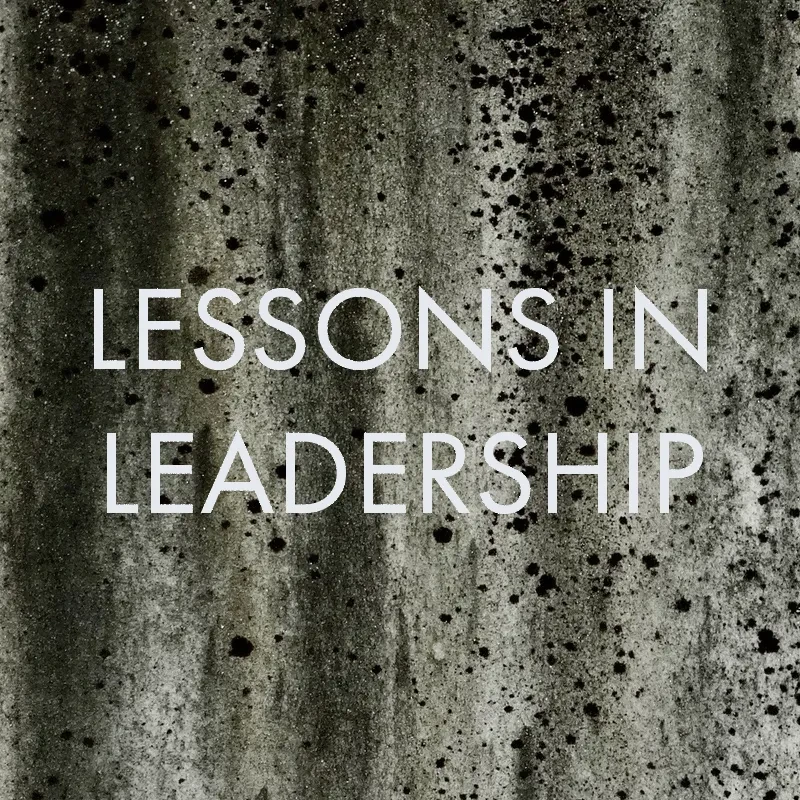
Interdependent Convergence
Dave Gilmore
President and CEO of DesignIntelligence
September 18, 2024
DI’s CEO examines intention, synthesis, systems and inclusion as value sources for the profession.
The idea of convergence is derived from the readily described visuals of things on individual paths redirecting to come together, forming a result. Be they alike or diverse, complementary or conflicting, these disparate elements come together in a common direction or flow. Such convergence may be anticipated or wholly surprising. Their coming together may yield positive or negative outcomes. In most cases, convergence by itself is not correlated to predefined outcomes. But, in some instances, designed convergence for a targeted outcome is a fulfillment method that can result in cohesion, unity and positive environmental, social and economic outcomes.
Though the theme of convergence has been the subject of writing and speaking, planning and execution over many decades, it has lost its meaning, impact and power in the chopped-salad confusion of “more is more” contemporary life. The “more is more” mentality has dominated global economies for so long that we seem to know no other way. Our myopic consciousness excludes most anything outside the context of immediacy. As such, we are now marked by shallowness, shortsightedness and general stupidity. (By the way, stupidity is “showing a great lack of intelligence or common sense.” Does this resonate?)
Convergence At Its Best
Convergence in its best and most meaningful context results in powerful happenings that extend beyond a single result. The multi-oriented, multi-disciplined and multi-perspective power of many factors coming together to inform and empower design is the stuff of magnificence, miracles and metanoia. When humans come together to accomplish what is best for most, inclusive of the myriad species beyond humans, just about anything is possible.
Convergence can empower and catalyze the realization of this m triplet. Magnificence is that quality of being exceptionally beautiful or impressive. It captures our attention and often our gaze. Miraculous is that quality of being assigned to divine interaction or involvement. It lifts us out of ourselves into a different, mysterious realm of reality, perhaps more real than our mundane physicality. Metanoia is the quality of changed direction from one state to another. It confronts us with transformative change that requires the better and best of us.
Convergence can also catalyze negative outcomes. When myopic thinking converges with fear, uncertainty and doubt, the catalyzed outcomes are often exclusion, marginalization and destructive dynamics. Negative convergence occurs far too often simply because we allow it to, rather than engineering a decoupling of contrary contributors. Convergence can occur naturally or be engineered. Responsible humans must choose to design positive convergence resulting in positive forces that catalyze transformation.
Designed interdependent convergence is the fundamental nature of what is often referred to as a “system of systems.”
The best expression of designed convergence is marked by interdependency between multiple contributors coming together. Decoupling of positive contributors results in independent contribution—by itself, not negative, but a yield that falls short of interdependence’s positive power. Designed interdependent convergence is the fundamental nature of what is often referred to as a “system of systems.”
The human body is a thing of wonder. One ancient said, “We are fearfully and wonderfully made.” This writer celebrates the magnificent design of the human species, not as a primordial accident or happenchance, but rather as the intricate outcome of the miraculous noted earlier. The human body is the ultimate system of systems, one designed and operating on the elemental principle of interdependent convergence. Everything is connected to everything else.
I remember as a child the sing-song ditty, “The foot bone’s connected to the ankle bone. The ankle bone’s connected to the leg bone...,” and so on. Everything’s connected to everything on a primary, secondary or tertiary hierarchy. It’s why an understanding of the interdependencies of the body’s systems is fundamental to the practice of medicine and health care.
My father was a medical general practitioner for 50 years before he passed. I recall him speaking often about system-interdependency in medicine and how medical education had shifted from understanding general holistic systems to specializations that neglected a comprehensive understanding of the body as a whole. As such, he warned that medicine would devolve to hyper-specialization and the neglect of a holistic understanding. This would then lead to fragmentation in education and practice and ultimately result in escalated effort and cost in health care delivery. He was neither a prophet nor the son thereof, but he was prophetic. We now live in an era of hyper-specialization with hyper-cost and degraded outcomes.
Design Parallels
These days I’m observing how design education and practice parallels this dynamic in medicine. How much of the overall design curriculum is dedicated to the holistic understanding of the system of systems that results in functionally healthy, effective and sustainable buildings? How much study and discussion are given to the intricacies of interdependence and then modeled in the studios and labs? What holistic practices operate under this same understanding of interdependent convergence and demand of their talent a working knowledge of the system of systems that comprises a building and its greater contexts?
In today’s architecture and interior design economy, practices are often market-sector oriented. Specializing in health care, hospitality, workplace, education and more, architecture and design practices have steadily progressed toward hyper-specialization as a commercial strategy. Though viable for marketing and business development effectiveness, care should be taken to not abandon the essential nature of design as applicable to any and every context. Carrying the powerful transformative awareness of design as the holistic unifier of interdependent convergence into every engagement has the potential to elevate the design professions from a commodity provider to their place at the center of value. Design beyond buildings — leveraging system of systems understanding into holistic solutions — alters the value orientation of the architect and designer from a diminishing trajectory to an ever-elevating one.
As new and reinforced disruptors challenge the status quo of traditional design ways and means, nothing is more essential to sustainable outcomes, measured and perceived, than embracing the truth of interdependent convergence as the essence of the value the design professions offer the world.
Are you embracing the truth?
Dave Gilmore is the president and CEO of DesignIntelligence.




